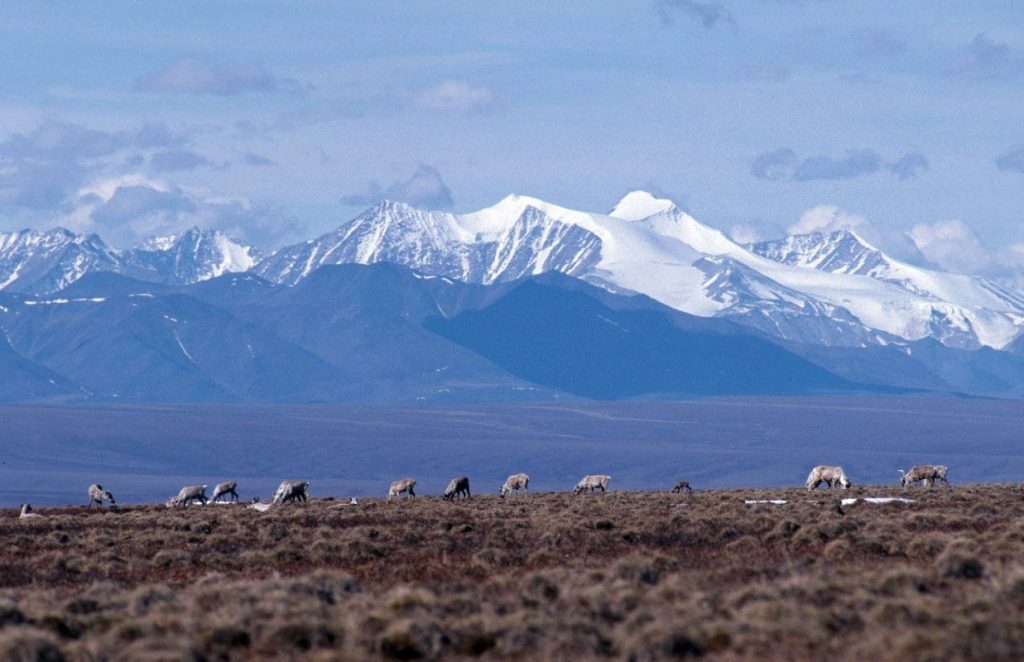Trump administration kicks off ANWR oil leasing process
The launch of a scoping process begins a 60-day comment period.

The Trump administration is formally kicking off the process intended to sell oil and gas leases in the Arctic National Wildlife Refuge, a swath of land cherished by environmentalists but long coveted by oil companies.
The Bureau of Land Management, the Department of Interior agency tasked with shepherding oil development on the refuge’s coastal plain, announced Thursday that the public review process to prepare for the first-ever ANWR lease sale will start with a Federal Register notice expected to be published Friday.
That notice will launch the scoping process, in which public comments will be taken for 60 days on how an environmental impact statement should proceed.
Regardless of the content of public comments, the Trump administration is committed to selling oil leases in the refuge’s coastal plain. The first lease sale will be held after the EIS is completed and will offer no less than 400,000 acres, a statement from the BLM said.
“Developing our resources on the coastal plain is an important facet for meeting our nation’s energy demands and achieving energy dominance,” Joe Balash, Interior’s assistant secretary for land and minerals management, said in the statement. “This scoping process begins the first step in developing a responsible path forward. I look forward to personally visiting the communities most affected by this process and hearing their concerns.”
The lease sale plan is in accordance with the 2017 tax-overhaul bill. A provision of that tax bill requires ANWR oil leasing, in the form of at least two sales, each offering at least 400,000 highly prospective acres.
Alaska politicians hailed the launch of scoping announcement as a milestone.
“We welcome this scoping announcement and the department’s continued work to implement our legislation opening the coastal plain to responsible energy development,” the Alaska Congressional delegation said in a joint statement contained in the BLM release. “We appreciate the department following the law, planning multiple public meetings with Alaskans, and moving forward on this important program to help ensure the energy and economic security of our nation.”
“Opening the 1002 Area of the Arctic National Wildlife Refuge to oil leasing is a historic opportunity for Alaska. This is an important priority for my administration given the potential for significant new revenues from lease sales and production,” Gov. Bill Walker said in a statement. “The State of Alaska will work with the U.S. Department of Interior to support their efforts to prepare for these lease sales and ensure that local input is taken into consideration. Alaska has a long history of safe development on the North Slope, and new technology is making the footprint of development even smaller.”
Opponents of ANWR drilling said they will fight to prevent it.
News of the start of the scoping process was “heartbreaking” and “frustrating,” said Bernadette Demientieff, executive director of the Gwich’in Steering Committee, which represents Gwich’in Athabascan people of Alaska and Canada.
“I’m standing here and I’m willing to take the next step because they are not going to get into the Arctic refuge. We will stand and we will fight every step of the way, and we will keep up with them,” Demientieff said in a teleconference Thursday.
Adam Kolton, executive director of the Alaska Wilderness League, noted that the announcement came on the anniversary of the 2010 Deepwater Horizon disaster.
“What we are seeing this week is a reckless mad rush to drill in the wildest place left in America without regard to its extraordinary wildlife or the people who depend on it,” he said in the teleconference. “The reason this area was first protected by president Eisenhower more than a half-century ago still stands today. It is every bit a natural treasure as Yellowstone, Yosemite, the Grand Canyon. And we must do all we can and we will do all we can to protect this cherished landscape — where polar bears build their maternity dens, hundreds of thousands of caribou give birth to their young — from being turned into a giant industrial complex.”